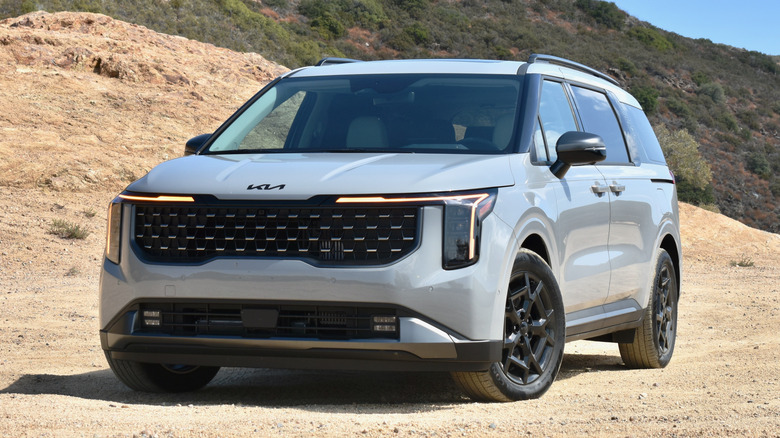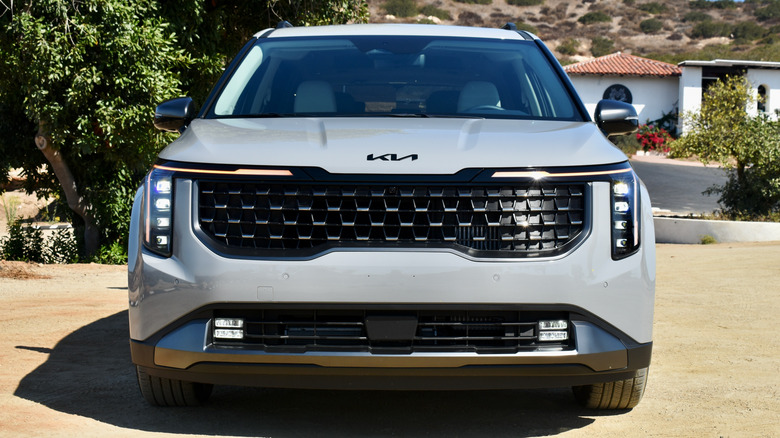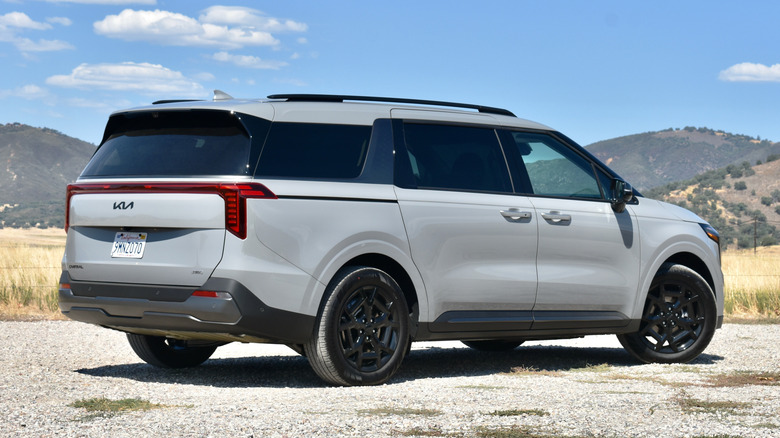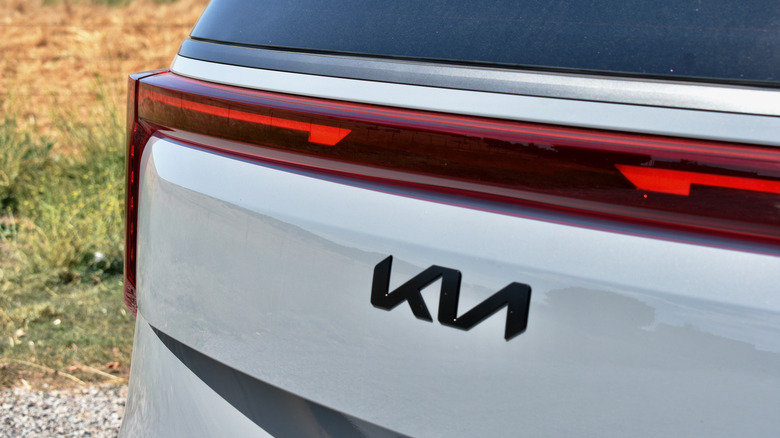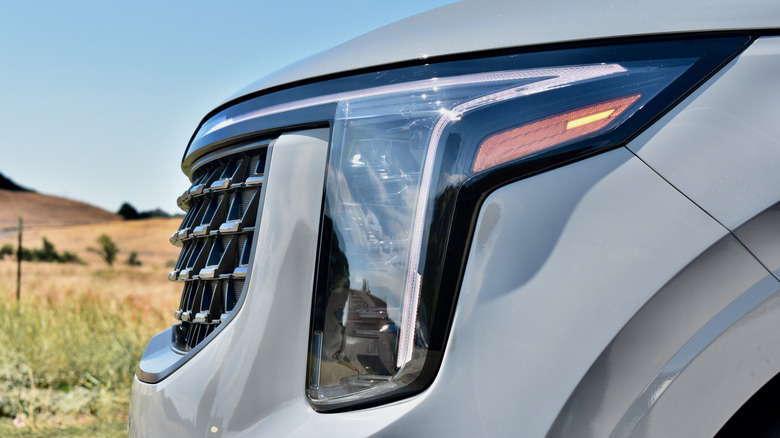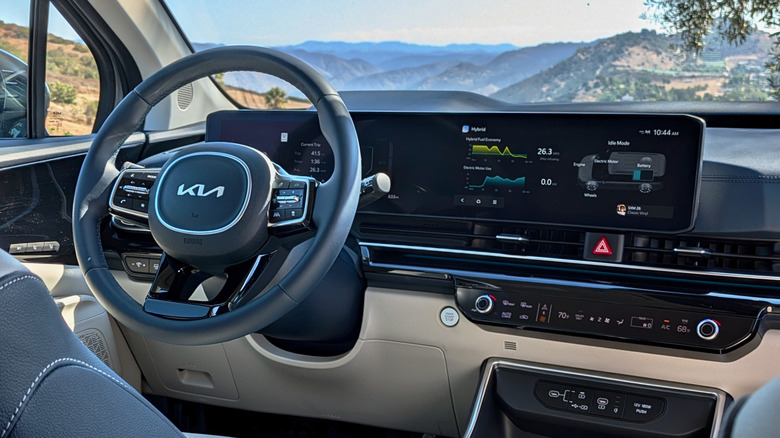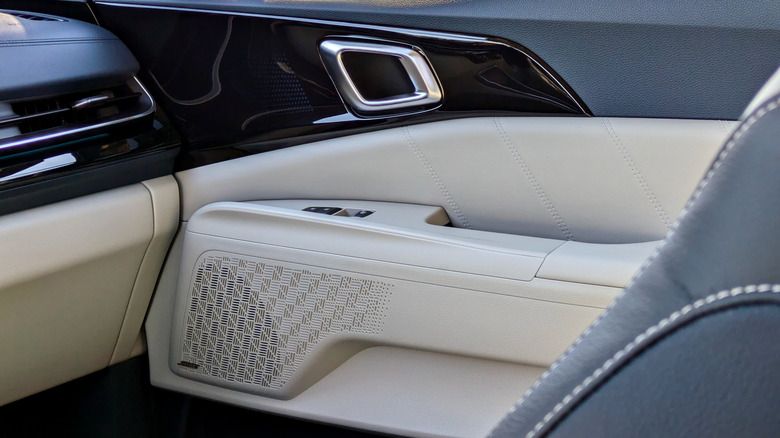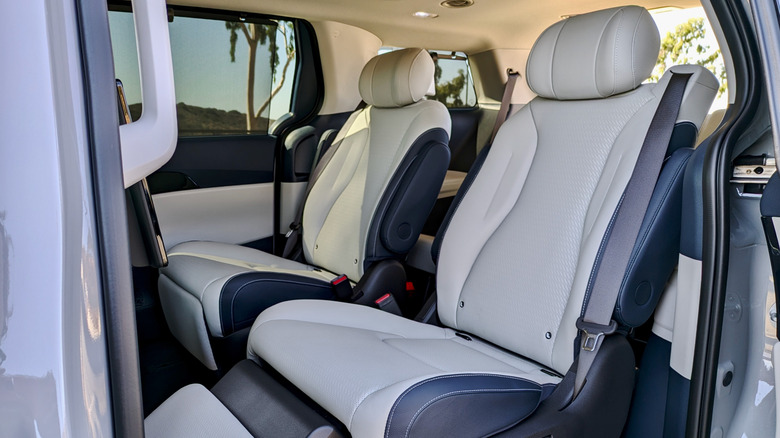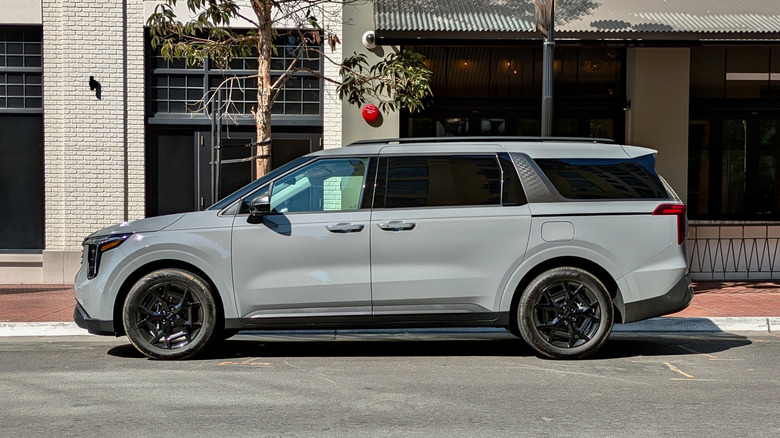2025 Kia Carnival Hybrid First Drive: Electric Power Is Great But Something's Missing
Most people dread becoming their parents, which is why after a boom in popularity in the 1990s, minivans have been relegated to the status of seriously uncool. But nobody told Kia customers.
Since its introduction in 2022 as the replacement for the Sedona, the Kia Carnival has attracted greater numbers of buyers each year, spending less time on dealer lots than any other model, Kia claims. And 55% of those customers were previously driving the SUVs that have largely replaced the minivan as the American family hauler of choice.
The Carnival remains one of the newest vehicles in a segment where certain models have been allowed to stagnate, but there was still room for improvement. So the 2025 Kia Carnival receives a new hybrid powertrain, among other updates.
Finally, a hybrid
Kia launched the Carnival just as the minivan segment was tipping toward hybrids. The Chrysler Pacifica Hybrid has offered a plug-in hybrid powertrain since the 2017 model year, while the Toyota Sienna went all-hybrid with a 2021-model-year redesign. The arrival of the 2025 Kia Carnival Hybrid leaves the Honda Odyssey as the only non-hybrid minivan left.
Kia also had all the ingredients on hand to make a hybrid Carnival. It used essentially the same powertrain from the Sorento Hybrid SUV, teaming a 1.6-liter turbocharged four-cylinder engine with an electric motor integrated with a six-speed automatic transmission. However, Kia used the 54-kilowatt (72-horsepower) electric motor from its plug-in hybrids in place of the Sorento's 13-kW (13-hp) motor, to account for the Carnival's extra weight.
Total system output is 242 hp and 271 pound-feet of torque, compared to 227 hp and 258 lb-ft for the Sorento Hybrid, and 287 hp and 260 lb-ft of torque for the 3.5-liter V6 that's still available in the Carnival for 2025. The V6 gets an eight-speed automatic transmission, but both hybrid and non-hybrid powertrains are available only with front-wheel drive.
Balancing efficiency and driving dynamics
The Carnival Hybrid is rated at 33 mpg combined (34 mpg city, 31 mpg highway), which shows the benefit of the hybrid powertrain when compared to 21 mpg combined (18 mpg city, 26 mpg highway) of the V6 version. However, it's still a bit less than the 36 mpg combined (36 mpg city, 36 mpg highway) achievable by front-wheel drive Toyota Sienna models (the electrified Sienna is also available with all-wheel drive).
The small tradeoff in fuel economy is meant to be balanced by better driving dynamics. Kia chose a conventional multi-speed automatic transmission for its hybrid system for added refinement, compared to gearless continuously variable transmissions (CVTs), and it offers a more normal-feeling driving experience than Toyota's hybrid system, which relies on a pair of motor/generators connected to a planetary gearset.
Making a hybrid feel more like a normal car doesn't exactly encourage efficiency behind the wheel, though. We saw indicated fuel economy dip into the low 20-mpg range as a result of overenthusiastic driving.
Not as refined as hoped
In standing-start acceleration and highway merging, the Carnival Hybrid felt reasonably quick. But power delivery is less linear than the non-hybrid model. You get a bigger initial kick of torque from the electric motor, but the internal-combustion component of the powertrain isn't as energetic.
It's remarkably that such a tiny engine can propel a large three-row vehicle like this—even with an electric assistance—at all, but that also cuts into the refinement Kia highlights as one of the plus points of this powertrain. On steep hills, the gasoline engine was working pretty hard, producing a thrum that wasn't exactly attractive.
The hybrid does at least offer pretty strong regenerative braking, which can be called up via steering-wheel paddles for something akin to engine braking via downshifting (which you can also do using the same paddles in Sport mode). That helped recover a significant amount of energy once we'd crested those hills. The level of regeneration can also be adjusted (there are three settings) or turned off completely.
Feels smaller than it is
The Carnival previously stood out for its excellent handling, and thankfully that's carried over to the new-for-2025 hybrid model. Like the competition, there really isn't anything "mini" about this generously-proportioned conveyance, but the Carnival does a good job of masking its size from behind the wheel—even on a twisty drive route more appropriate for a Miata than a minivan.
Key to this is well-tuned steering that responds to fairly small movements of the wheel without causing the van to dart about at the slightest twitch of the driver's hands. It was easy to judge how much steering input was needed to take a set through a corner without having to make corrections midway, creating a smoother feel for both driver and passengers.
The suspension also maintained its composure both in corners and over bumps. It was firm enough to keep the Carnival from leaning too much during cornering or flopping around when driving over potholes without being too harsh overall. That, combined with a cabin that's quiet even by the high standards of modern vehicles, made the highway portions of the drive fairly pleasant as well.
The Carnival wishes it was an SUV
The new hybrid powertrain and well-tuned chassis components are packaged in an updated exterior that better conveys Kia's intentions for the Carnival, but isn't necessarily an aesthetic improvement.
Kia has always argued that the Carnival is a minivan with SUV-like attributes, but that only really comes through now that the Carnival has adopted the wide-grille front fascia of the refreshed Sorento SUV. It's a big contrast from the more streamlined appearance of the pre-facelift Carnival, and one that's likely to appeal to customers who want more rugged styling. At least until giant grilles and upright front ends finally jump the shark.
The visually-bulkier front fascia balances out the rear end, which receives small changes like a relocated license-plate housing to try to break up the vast amount of space back there. A piece of rear-bumper trim meant to look like a skid plate is an odd choice considering that there is no corresponding piece at the front. Perhaps Kia is saving that for a future Carnival X-Pro off-road package.
Drivers can leave their cables at home
Kia (along with sibling brand Hyundai) has long made buyers choose between either a larger touchscreen or wireless Apple CarPlay and Android Auto, but those features come together in the 2025 Carnival. The previously-optional 12.3-inch touchscreen is now standard (an 8.0-inch was previously the default) but without the need to bring a cable.
The two higher trim levels—SX and SX Prestige—also come with a 12.3-inch digital instrument cluster, which is integrated with the touchscreen to form one long curved display like in other recent Kia models. Kia gets credit for not simply reproducing the look of analog gauges, but perhaps could've gone farther in rearranging things so information like the regenerative-braking setting isn't pushed to the bottom corners of the cluster.
An 11.0-inch head-up display is also available, along with digital key functionality and a digital rearview mirror. USB ports for all three rows are included, while an optional rear-seat entertainment system adds dual 14.6-inch monitors that can stream content from connected devices or their own built-in Netflix and YouTube apps.
The Carnival also comes standard with expected driver-assist features like forward-collision warning and automatic emergency braking, which Kia claims to have updated for better performance. Kia also remains one of the few brands to offer a stop-and-go feature as part of its standard adaptive cruise control system, and while the optional Highway Driving Assist 2 system doesn't offer true hands-free capability, that's not available in any other minivan either.
An attractive and spacious interior
Our Carnival Hybrid SX Prestige test van arrived with a stylish navy and gray interior that should serve as an invitation to other automakers to be more daring with their interior color palettes. This top-spec model didn't offer the throw pillows you get in a Chrysler Pacifica Hybrid Pinnacle, but the quality of materials also seemed more consistent throughout the cabin. Kia hasn't gone too touchscreen-crazy, but many of the physical controls do double duty depending on what screen menu is selected. One knob controls both audio volume and temperature, for example.
Interior dimensions do not change for 2025, and there is no difference in space between the hybrid and non-hybrid models. That means passengers should find similar headroom and legroom to other minivans regardless of which row they're sitting in. Up front, the Carnival offers the tall seating position of an SUV, but with better forward visibility thanks to the somewhat shorter hood.
The Carnival also boasts 40.2 cubic feet of cargo space behind its third row and 145.1 cubic feet with both the second and third rows folded—more than the competition—although you still can't get an equivalent to Chrysler's Stow 'n Go in-floor storage bins. Kia offers a fold-flat third row, but extending the load floor to the second row involves taking those seats out. Unless, that is, you have the reclining VIP Lounge Seats as installed in our SX Prestige test van, which can't be removed.
2025 Kia Carnival Hybrid Verdict
Pricing for the 2025 Kia Carnival Hybrid ranges from $41,895 for the base LXS grade to $53,995 for the top SX Prestige, with EX ($44,095) and SX ($48,995) grades in between. Each grade costs $2,000 more than the equivalent non-hybrid, but Kia also offers a lower-priced LX grade for the gas-only model that's $4,000 less than the cheapest hybrid. Unless you're specifically looking at that base model, or plan to tow with your Carnival (V6 models are rated at 3,500 pounds, compared to 2,500 pounds for hybrids), the hybrid looks like the more sensible choice. It's more fuel efficient, without any drawbacks when it comes to interior space or the driving experience.
Looking at other minivans, the hybrid-only Toyota Sienna is slightly more fuel efficient, slightly cheaper in its base form (assuming you can find one of those loss-leaders on a dealer lot) and is available with all-wheel drive. The Kia offers a more polished infotainment system and driving experience. The Chrysler Pacifica Hybrid offers 32 miles of all-electric range, but starts above $50,000. The Honda Odyssey isn't available as a hybrid at all.
The Carnival was already a well-executed vehicle that made a strong case for itself and for minivans in general. The added fuel efficiency of the new hybrid model makes it even better, checking a box that should be very important to budget-conscious families. Minivans may still not be cool, but as hybrids, they definitely make a lot of sense.
